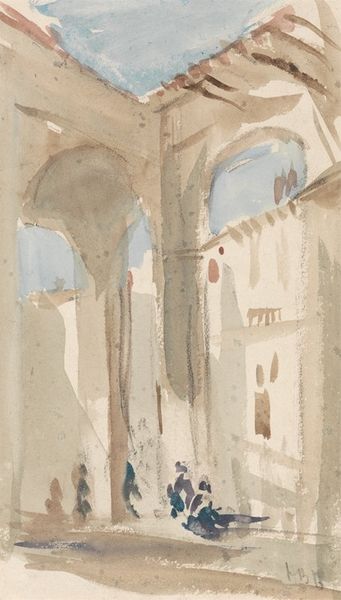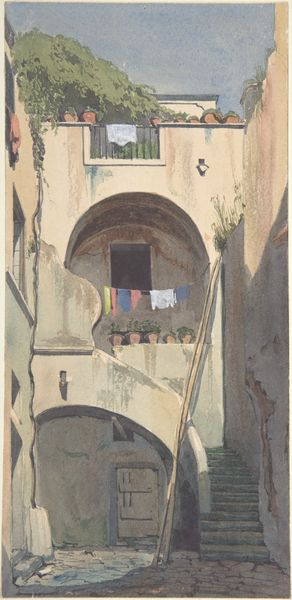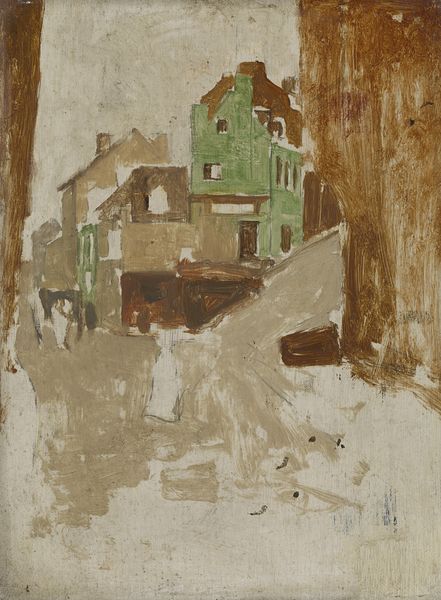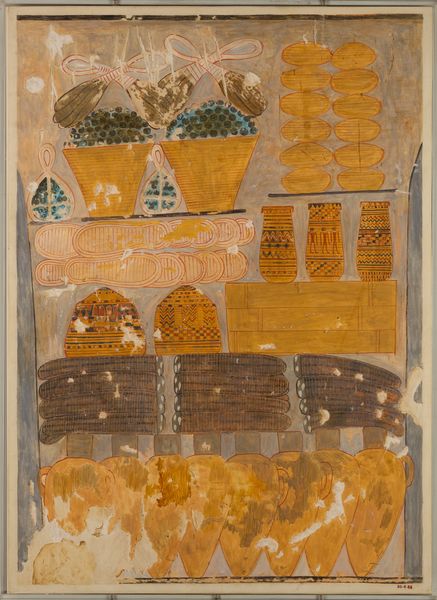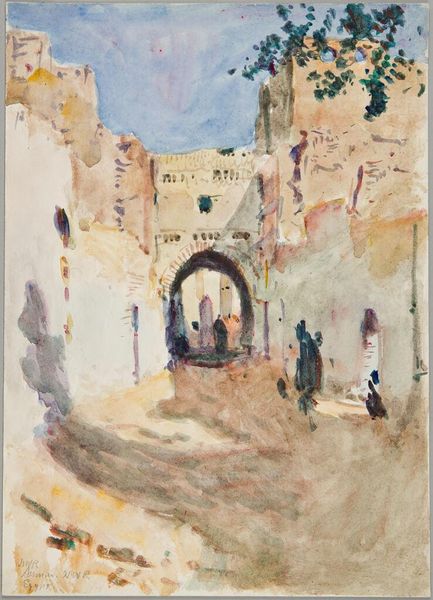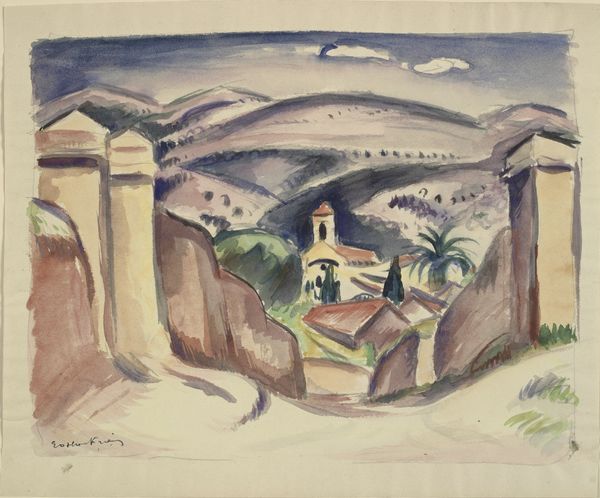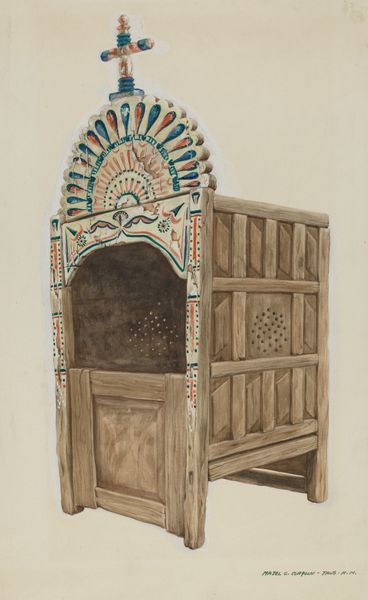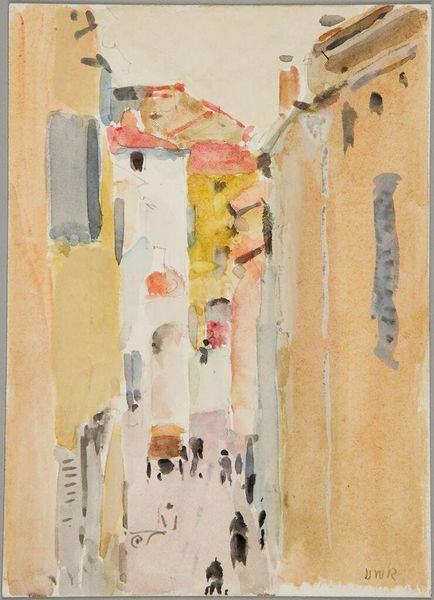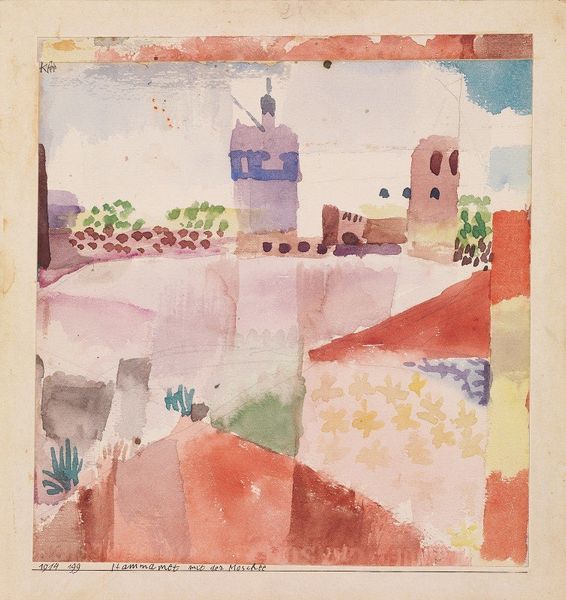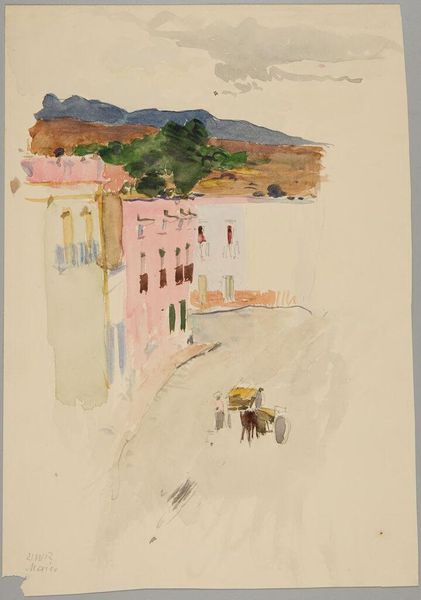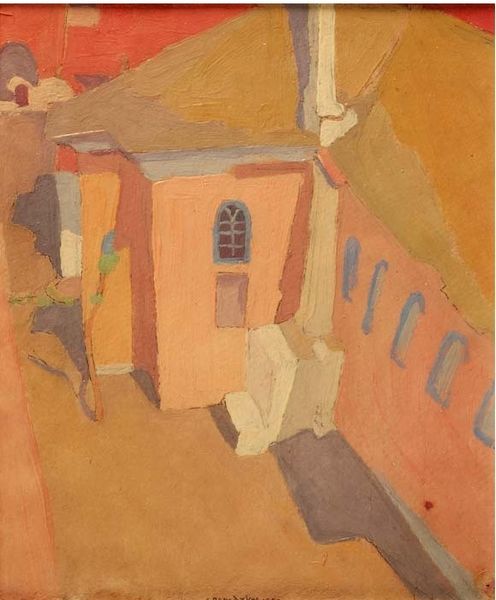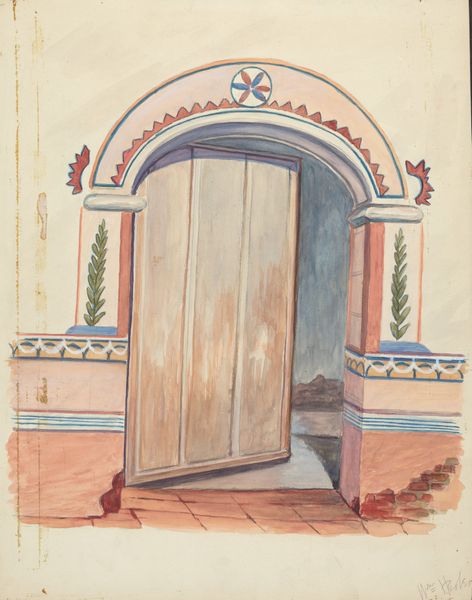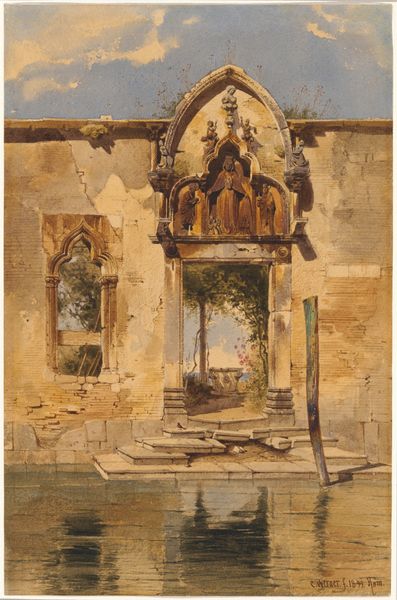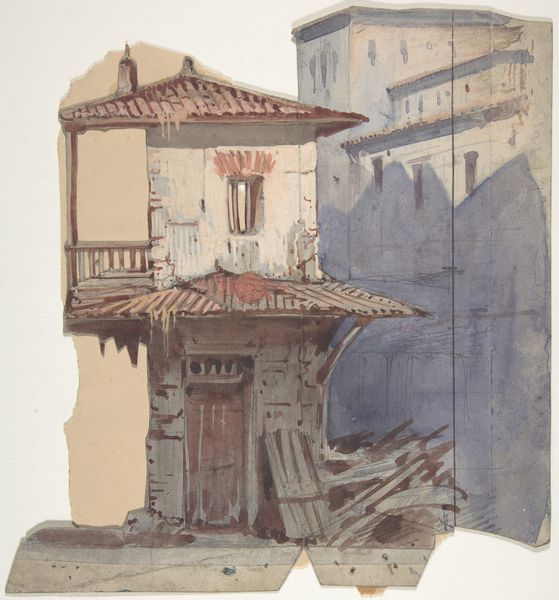
print, watercolor
#
water colours
# print
#
landscape
#
watercolor
#
cityscape
#
watercolour illustration
#
watercolor
Copyright: Alexis Gritchenko,Fair Use
Editor: This is "Biot" by Alexis Gritchenko, created with watercolor, I believe. It's giving me such a calm, serene feeling, almost like looking through a window into a simpler time. The colours are muted but hopeful. What’s your take on it? Curator: It’s interesting you use the word ‘window’ because the framing device certainly plays on that idea, immediately conjuring thoughts about vantage points. Now, when you consider Gritchenko's use of watercolor and printmaking, it brings up crucial questions about reproduction and dissemination. How does the material – a relatively accessible medium like watercolor and a replicable one such as a print – affect our understanding of this scene, which at first seems quite unique and individual? Editor: That’s a good point. Does it somehow democratize the image of Biot, making it available to more people and devaluing the preciousness of traditional oil painting, for example? Curator: Precisely. Consider the labour involved in both creating the original watercolor and producing the prints. Where was Gritchenko situated socially and economically? Did his artistic choices challenge existing hierarchies of artistic production? He chooses a mundane scene in the end, the town is quaint but seems quite normal. Editor: I see what you mean. The print allows more people access to the image, making it a commodity in a sense, rather than a unique artwork available to a privileged few. Also, if the town of Biot has this artistic depiction reproduced across many prints, it brings the labor into play because this could become a source of tourism, generating income for the citizens there as well. Curator: Exactly! It forces us to think about the relationship between the artist, the materials, the subject matter, and the wider socio-economic context in which the work is created and consumed. Editor: That is really thought-provoking. It’s like Gritchenko isn’t just showing us a landscape, but also hinting at the economic forces at play. Curator: Yes. This reading emphasizes how artistic practices are embedded in broader networks of labor and value.
Comments
No comments
Be the first to comment and join the conversation on the ultimate creative platform.
